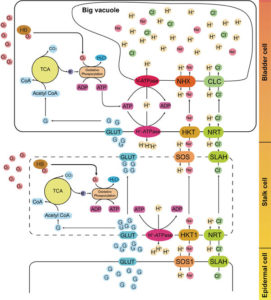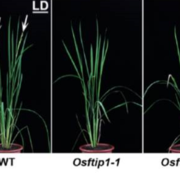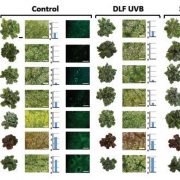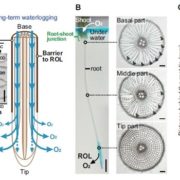The genome of Quenopodium quinoa, a halophytic pseudocereal
 Quenopodiium quinoa is a highly nutritive and facultative halophyte pseudocereal whose cultivation has increased 10 fold in the last decades. However, the adaption to non-native areas is not easy to achieve and the limited genetic resources do not allow a breeding program. Zou and collaborators have generated a genome draft, covering 90.2% of the nuclear genome, with 54,438 protein-coding genes. Of these protein-coding genes, 95.3% were functionally annotated. Stress related genes, i.e., ABA signaling and ABA biosynthesis, had higher gene copy number compared to other species. The authors also analyzed the transcriptome of the epidermal bladder cells (EBCs, a specialized cell that sequesters salts from surrounding cells) and compared it to the rest of leaf cells. Genes involved in abiotic stress response, cell wall and suberin synthesis were upregulated in EBCs. In addition, using the results of the EBC transcriptome analysis, the authors propose a model for bladder salt accumulation. (Summary by Cecelia Vasquez-Robinet) Cell Research 10.1038/cr.2017.124
Quenopodiium quinoa is a highly nutritive and facultative halophyte pseudocereal whose cultivation has increased 10 fold in the last decades. However, the adaption to non-native areas is not easy to achieve and the limited genetic resources do not allow a breeding program. Zou and collaborators have generated a genome draft, covering 90.2% of the nuclear genome, with 54,438 protein-coding genes. Of these protein-coding genes, 95.3% were functionally annotated. Stress related genes, i.e., ABA signaling and ABA biosynthesis, had higher gene copy number compared to other species. The authors also analyzed the transcriptome of the epidermal bladder cells (EBCs, a specialized cell that sequesters salts from surrounding cells) and compared it to the rest of leaf cells. Genes involved in abiotic stress response, cell wall and suberin synthesis were upregulated in EBCs. In addition, using the results of the EBC transcriptome analysis, the authors propose a model for bladder salt accumulation. (Summary by Cecelia Vasquez-Robinet) Cell Research 10.1038/cr.2017.124









